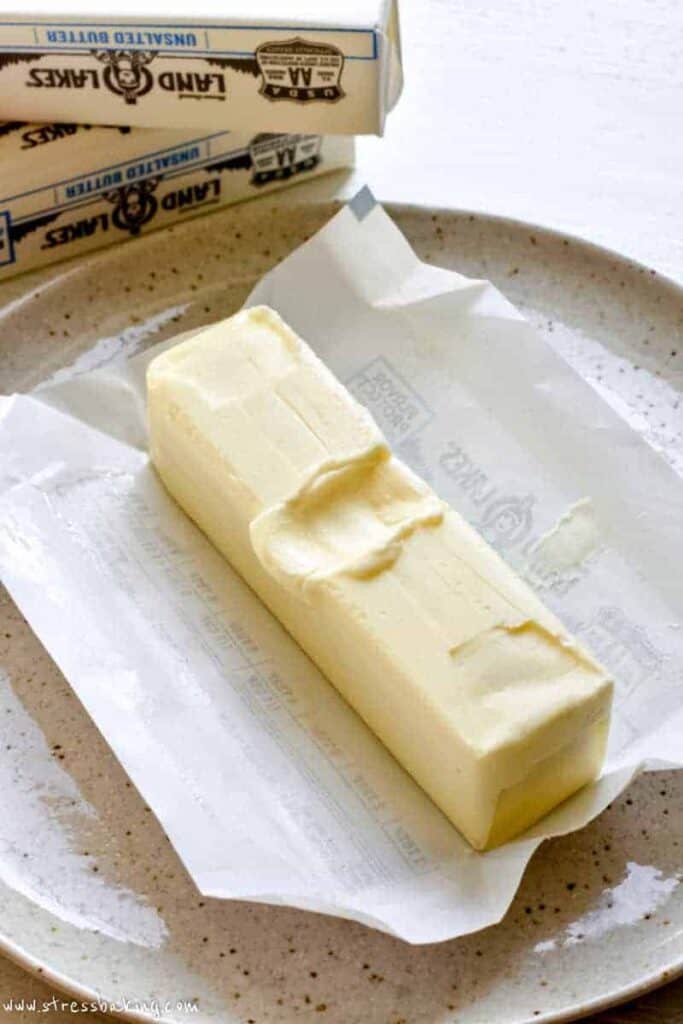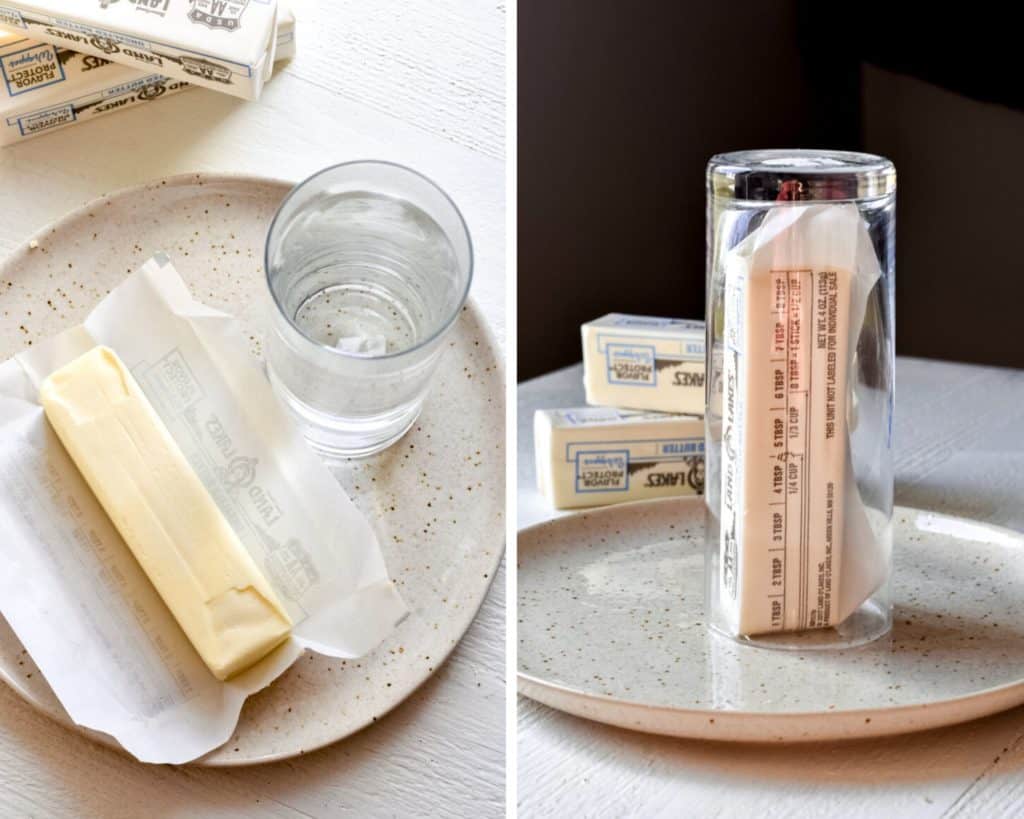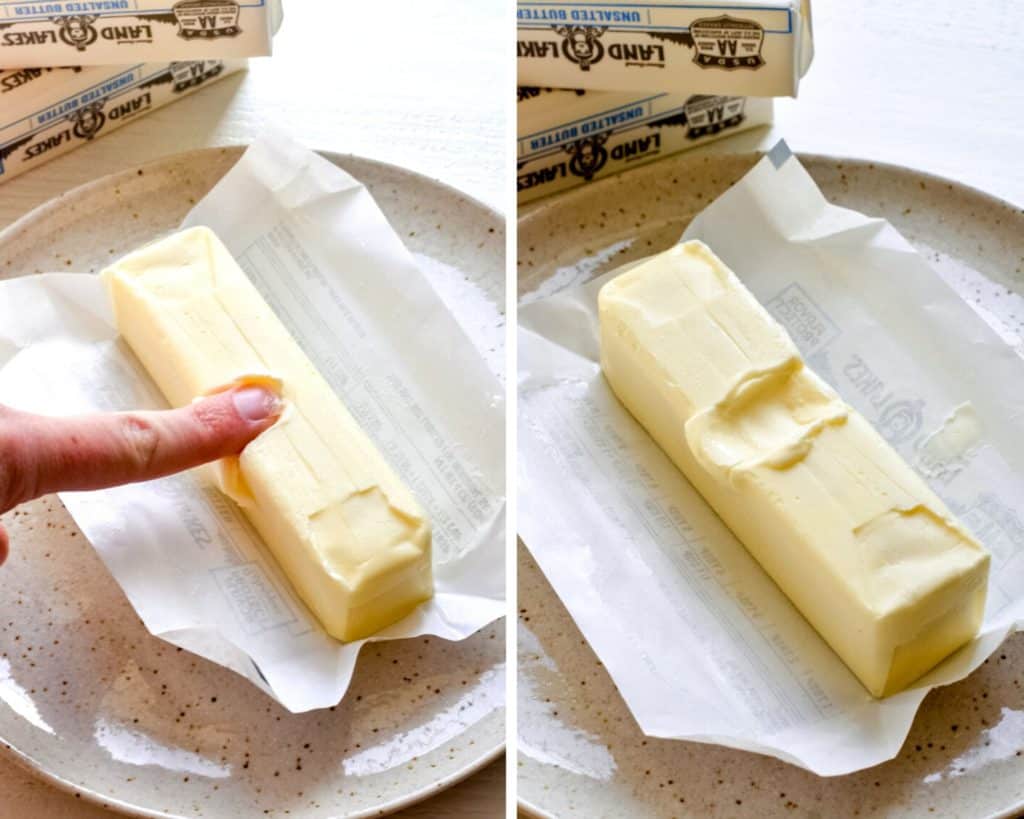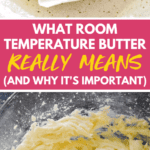What Room Temperature Butter Means (and Why It’s Important)
Part of my Baking Basics series: Learn about the different butter temperatures you might see in recipes, what room temperature butter really means, how to get it right, and why butter temperature matters so much in baking.

You'll frequently see recipes calling for “room temperature butter”, but do you really know what that means? If not, you're in the right place! Let's do this thing.
What room temperature butter really means
Room-temperature butter doesn't mean that it's warm – in fact, it will probably be colder than the room that it's in. It will still be cool to the touch and should be around 65°F (18°C).
Why the right butter temperature matters in baking
The temperature and consistency of your butter can make or break your recipe. No, seriously – it can.
If you've ever made cookies and had them spread all over the baking sheet to form one giant mutant cookie, the butter was likely too warm and fluid.
Or if you've ever made a cake and found that it was dense when you were expecting it to be fluffy, that means the butter was likely too soft.
You'll notice that I often call for room-temperature butter and eggs in my recipes, and the reason why is simple – room-temperature ingredients combine more easily than cold ones.
Cold ingredients have a tough time emulsifying, and you end up with uneven and unappetizing results.
Butter is a solid fat that has the ability to hold air, and the process of creaming together butter and sugar traps that air. So when you're baking a cake, the trapped air expands as it bakes and provides you with that soft and fluffy cake you're seeking.

Different butter temperatures
Chilled
- Temperature: About 35°F (2°C)
- Application: Commonly found in pie recipes. You cut cubes of chilled butter into the dry ingredients for the crust, and it lends itself to a wonderfully flaky crust.
Softened
- Temperature: About 65°F (18°C)
- Application: Commonly found in cake recipes, as well as some cookies. Its texture is flexible enough to be creamed together with sugar, but still firm enough that it incorporates the right amount of air during mixing.
Melted and Cooled
- Temperature: About 85°F (29°C)
- Application: Commonly found in brownie and bar recipes, as well as some cookies. When added it brownies, it can help provide a shiny, crackled crust, and lends itself to chewy cookies. Keep in mind that when melted butter is used in cookie recipes, you'll need to chill the dough before baking to prevent them from overspreading.
How to bring butter to room temperature
The tried and true method to bring butter to room temperature: Let the butter sit on your counter for 1-2 hours prior to using it. The amount of time it takes will depend on how warm your kitchen is.

However… you can't always plan that far ahead, right? My favorite method to bring butter to temperature more quickly is to fill a glass with boiling water, let it sit for 10 seconds or so, then pour out the water and turn it upside down over the stick of butter on a plate.
After a few minutes, you can remove the glass and you'll find yourself with softened butter!
The easiest test of your butter's temperature is to press a clean finger into the top of the butter – your finger should make an indent, but not slip straight through to the other side.

Full disclosure: I never actually take the temperature of my butter. But if you're new to baking and still trying to get a hang of it, go ahead and stick a thermometer in the middle of the stick of butter as you get accustomed to what it should look and feel like.
If you've ever wondered what a cat that desperately wants the butter you're working with looks like, here's a prime example of one such cat being deprived of the golden goodness he desires:


I hope this information helps!
Do you have any questions about this topic that I didn't answer? Let me know in the comments below!



Thanks so much. I’ve never had a problem before with baking chocolate chip cookies until I started softening the butter in the microwave. It was nice & soft fast, but the temp must be too warm since my cookies turned out like pancakes . I’m going back to my tried & true of letting the butter soften naturally to room temperature . Thank for your advice.
I’m so glad it was helpful!
Thank you so very much for your wonderful tips. You are a warehouse of information and truly a wonderful person for sharing this information. I love your tips and tricks.
I wish more chefs, bakers, cooks, etc were as sharing as you. The wonderful tips you give help us to prepare, bake etc and be successful!!!
Thank you again, I hope you don’t mind that I share with my sisters and family.
Wishing you a marvelous Christmas holiday and to a wonderful new year
I’m so glad that you find the information helpful – thank you for the kind words! And I definitely don’t mind you sharing with family – that’s what I want you to to do :) Happy Holidays!